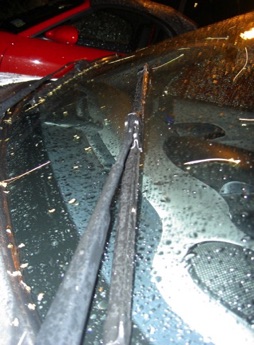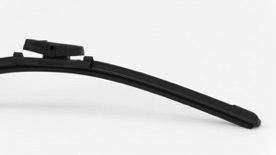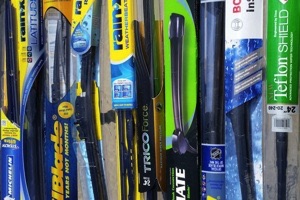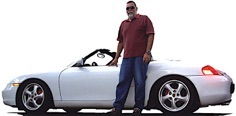
Published in the September 2016 issue of “Die Porsche Kassette”
We’ve all been told that you need to ONLY use Porsche (OEM) parts when replacing anything in your car.
For the most part that is great advise .... but not always!
Original Equipment Manufacturer (OEM) parts are specifically designed for a particular car by the factory to assure maximum performance and value, so, as a rule of thumb, it is good advise to only use OEM as replacement parts on your Porsche. If your car is a Concour D’Elegance entry you should only use OEM and specific to your model and model year, otherwise the Judges will penalize you.
But there are some areas where the aftermarket products have surpassed the OEM parts. Windshield Wipers is one of them.
Except for the newest models, where the factory is catching up with the new materials and designs, the windshield wipers had not changed much throughout their history, which, as a side story, date back to 1903 when they were patented by Mary Anderson, from Birmingham, AL as a manually operated rubber blade-against-the-windshield contraption. It wasn’t till 1922 when Cadillac made windshield wipers standard on their vehicles.
Windshield Wipers are wear items, just like brakes and tires and need to be replaced on a regular basis, generally when doing scheduled maintenance on the car.
Depending on the type of wipers (material), their use and general (weather) conditions they will wear differently. As soon as you start to not see clearly through your windshield during rain or other inclement weather, they should be replaced.

But, now that you’re aware of the aftermarket wipers, which ones should you install?
Keep in mind that our cars have different windshield sizes and curvatures, depending on the particular model and model year. On most Porsches (with very rare, racing, exceptions) there is a pair of blades on the windshield. But those two blades may be different in size and in curvature, so when replacing your wipers with aftermarket blades check the application guides which will tell you exactly which two blades you need.
Aside from the difference in size and curvature wipers come in 3 general types:
Bracket, Beam and Hybrid.
The bracket type is the traditional wiper with a frame supporting the blade.
This frame is designed to follow the windshield’s curvature and press the rubber blade onto the glass, but it is higher profile and can trap insects, road debris, and/or ice in its components.

The beam type uses a single strip of curved metal within the blade to keep the blade’s edge pressed against the glass. Because they are much lower profile that the bracket type they remain clear of buildup. They also have an airfoil design that pushes the blade harder against the windshield as speed increases.

As the name implies, hybrid blades are a combination of the above. They use a plastic shell that acts as the frame but with a lower profile. The shell is also aerodynamically designed to keep the blade against the glass even at high speeds.

And then you have a variety of brands to choose from, such as Bosch, Rain-X, Michelin, etc., etc.
I personally like and recommend the Bosch ICON and the Rain-X Latitude (in that order). They both have excellent wiper qualities but Bosch recently reformulated their blades with “Clear Max 365”, which they claim resists ozone-induced cracking of the material longer than the competition. Only time will tell if those claims are right, but I’ll be wiping away rain and love bugs in the meantime.

By the way, you can get them at just about any auto parts store or online for less than $20.00 per blade and they are very easy to install by yourself.
For more information on wipers and more, please visit my website:
www PedrosGarage.com.
Happy Porsche’ing,
Ⓒ2016 Technolab / PedrosGarage.com


